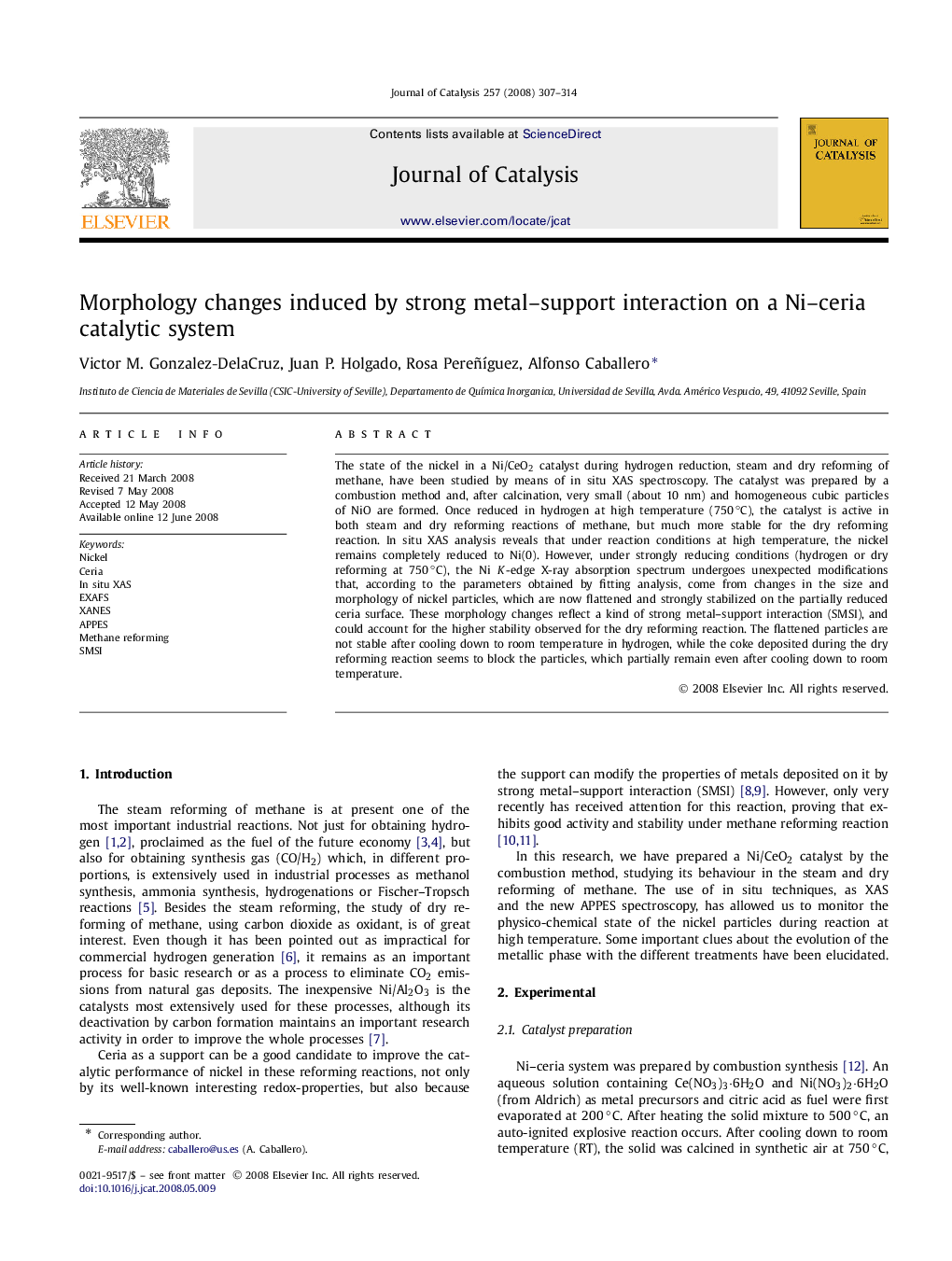| Article ID | Journal | Published Year | Pages | File Type |
|---|---|---|---|---|
| 62615 | Journal of Catalysis | 2008 | 8 Pages |
The state of the nickel in a Ni/CeO2 catalyst during hydrogen reduction, steam and dry reforming of methane, have been studied by means of in situ XAS spectroscopy. The catalyst was prepared by a combustion method and, after calcination, very small (about 10 nm) and homogeneous cubic particles of NiO are formed. Once reduced in hydrogen at high temperature (750 °C), the catalyst is active in both steam and dry reforming reactions of methane, but much more stable for the dry reforming reaction. In situ XAS analysis reveals that under reaction conditions at high temperature, the nickel remains completely reduced to Ni(0). However, under strongly reducing conditions (hydrogen or dry reforming at 750 °C), the Ni K-edge X-ray absorption spectrum undergoes unexpected modifications that, according to the parameters obtained by fitting analysis, come from changes in the size and morphology of nickel particles, which are now flattened and strongly stabilized on the partially reduced ceria surface. These morphology changes reflect a kind of strong metal–support interaction (SMSI), and could account for the higher stability observed for the dry reforming reaction. The flattened particles are not stable after cooling down to room temperature in hydrogen, while the coke deposited during the dry reforming reaction seems to block the particles, which partially remain even after cooling down to room temperature.
